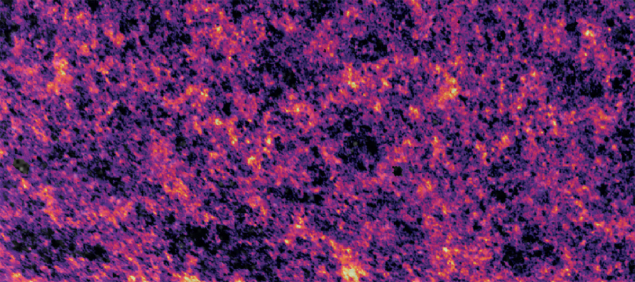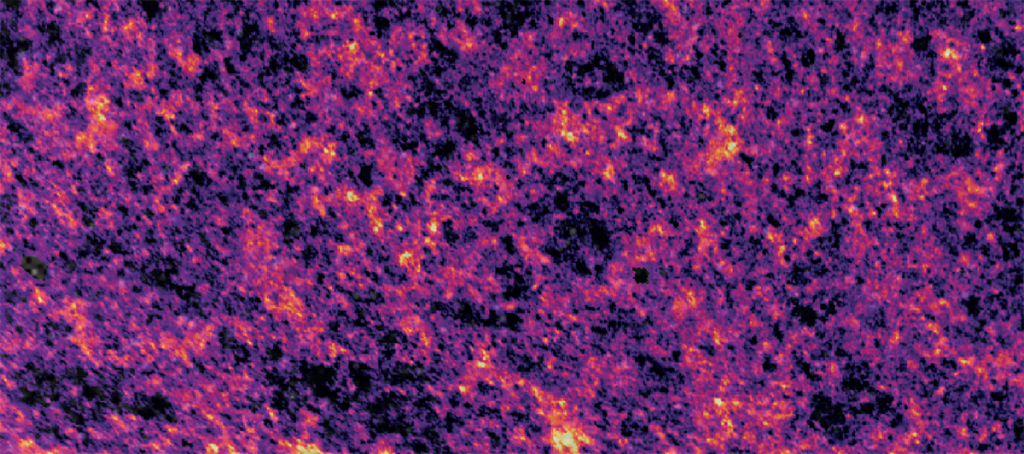Frank Wilczek explains why the Higgs sector could act as a portal through which to access a wide class of “phantom” particles that might otherwise elude detection.
Referring to the field equation of general relativity Rμν – ½ Rgμν = κTμν , Einstein is reported to have said that the left-hand side, constructed from space–time curvature, is “a palace of gold”; while the right-hand side, which parameterises the energy and momentum of matter, is by comparison “a hovel of wood”. Present-day physics has arrived at much more concrete ideas about the right-hand side than were available to Einstein. It is fair to say that some of it has come to look quite palatial, and fully worthy to stand alongside the left-hand side. These are the terms that involve field kinetic energy and gauge bosons, as described by the Standard Model (SM). Their form follows logically, within the framework of relativistic quantum field theory, directly from the principles of local gauge symmetry and relativity. Mathematically, they also speak the same geometric language as the right-hand side. The gauge bosons are avatars of curvature in “internal spaces”, similar to how gravitons are the avatars of space–time curvature. Internal spaces parameterise ways in which fields can vary – and thus, in effect, move – independently of ordinary motion in space–time. In this picture, the strong, weak and electromagnetic interactions arise from the influence of internal space curvature on internal space motion, similar to how gravity arises from the influence of space–time curvature on space–time motion.
The Higgs particle is the only portal connecting normal matter to such phantom fields
The other contributions to Tμν, all of which involve the Higgs particle, do not yet reach that standard. We can aspire to do better! They are of three kinds. First, there are the many Yukawa-like terms from which quark and lepton masses and mixings arise. Then there is the Higgs self-coupling and finally a term representing its mass. These contributions to Tμν contain almost two dozen dimensionless coupling parameters that present-day theory does not enable us to calculate or even much constrain. It is therefore important to investigate experimentally, through quantitative studies of Higgs-particle properties and interactions, whether this ramshackle structure describes nature accurately.
Higgs potential
The Higgs boson is special among the elementary particles. As the quantum of a condensate that fills all space, it is metaphorically “a fragment of vacuum”. Speaking more precisely, the Higgs particle has no spin, no electric or colour charge and, at the level of strong and electromagnetic interactions, normal charge conjugation and parity. Thus, it can be emitted singly and without angular momentum barriers, and it can decay directly into channels free of colour and electromagnetically charged particles, which might otherwise be difficult to access. For these and other, more technical, reasons, the Higgs particle has the potential to reveal new physical phenomena of several kinds.
A unique aspect of the Higgs mass term is especially promising for revealing possible shortcomings in the SM. In quantum field theory, an important property of an interaction is the “mass dimension” of the operator that implements it – a number that in an important sense indicates its complexity. Scalar and gauge fields have mass dimension 1 as do space–time derivatives, whereas fermion fields have mass dimension 3/2. More complicated operators are built up by multiplying these, and the mass dimension of a product is the sum of the mass dimensions of its factors. Interactions associated with operators whose mass dimension is greater than 4 are problematic because they lead to violent quantum fluctuations and mathematical divergences. Whereas all the other terms in the SM Lagrangian arise from operators of mass dimension 4, the Higgs mass term has mass dimension 2. Thus it is uniquely open to augmentation by couplings to hypothetical new SU(3) × SU(2) × U(1) singlet scalar fields, because the mass dimension of the augmented interaction can be 3 or 4 – i.e. still “safe”. The Higgs particle is the only portal connecting normal matter to such phantom fields.

Why is this an interesting observation? There are three main reasons: two broadly theoretical, one pragmatic. First of all, the particles that are generally considered part of the SM carry a variety of charge assignments under the gauge groups SU(3) × SU(2) × U(1) that govern the strong and electroweak interactions. For example, the left-handed up quark is charged under all three groups, while the right-handed electron carries only U(1) hypercharge. Thus it is not only logically possible, but reasonably plausible, that there could be particles that are neutral under all three groups. Such phantom particles might easily escape detection, since they do not participate in the strong or electroweak interactions. Indeed, there are several examples of well-motivated candidate particles of that kind. Axions are one. Since they are automatically “dark” in the appropriate sense, phantom particles could contribute to the astronomical dark matter, and might even dominate it, as model-builders have not failed to notice. Also, many models of unification bring in scalar fields belonging to representations of a unifying gauge group that contains SU(3) × SU(2) × U(1) singlets, as do models with supersymmetry. Only phantom scalars are directly accessible through the Higgs portal, but phantoms of higher spin, including right-handed neutrinos, could cascade from real or virtual scalars.
Mysterious values
Second, the empirical value of the Higgs mass term is somewhat mysterious and even problematic, given that quantum corrections should push it to a value many orders of magnitude higher. This is the notorious “hierarchy problem” (see Naturalness after the Higgs). Given this situation, it seems appropriate to explore the possibility that part (or all) of the effective mass-term of the SM Higgs particle arises from more fundamental couplings upon condensation of SU(3) × SU(2) × U(1) singlet scalar fields, i.e. the emergence of a non-zero space-filling field, as occurs in the Brout–Englert–Higgs mechanism.
The portal idea leads to concrete proposals for directions of experimental exploration
Third, the portal idea leads to concrete proposals for directions of experimental exploration. These are of two basic kinds: one involves the observed strength of conventional Higgs couplings, the other the kinematics of Higgs production and decay. Couplings of the Higgs field to singlets that condense will lead to mixing, altering numerical relationships among Higgs-particle couplings and masses of gauge bosons, and of fermions from their minimal SM values. Also, the Higgs-field couplings to gauge bosons and fermions will be divided among two or more mass eigenstates. Since existing data indicates that deviations from the minimal model are small, the coupling of normal matter to the “mostly but not entirely” singlet pieces could be quite small, perhaps leading to very long lifetimes (as well as small production rates) for those particles. Whether or not the phantom particles contribute significantly to cosmological dark matter, they will appear as missing energy or momentum accompanying Higgs particle decay or, through Bremsstrahlung-like processes, when they are produced.
We introduced the term “Higgs portal” to describe this circle of ideas in 2006, triggering a flurry of theoretical discussion. Now that the portal is open for business, and with larger data samples in store at the LHC, we can think more concretely about exploring it experimentally.








